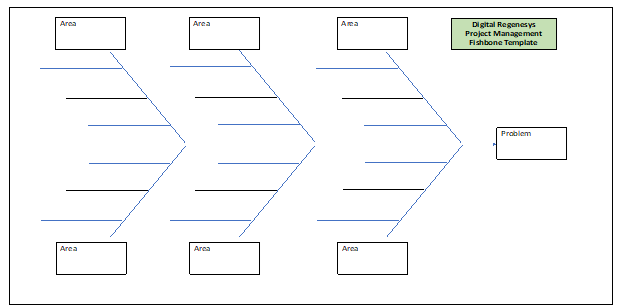- Crisis Management – How To Weather A Corporate Storm - May 31, 2023
- What Are the Current Big Issues in Leadership? - May 25, 2023
- Problem-Solving Techniques – Part 5 - May 18, 2023
In part 1 and part 2 of this series, we talked about understanding critical thinking and problem-solving and its techniques. We touched on why problem-solving is important, how you can develop it into your organisation as well as the brainstorming steps and the five whys. In this article, we’re going to share how to use SWOT Analysis and the Fishbone diagram techniques.
SWOT analysis
SWOT analysis is a strategic planning method to identify and analyse an organisation’s strengths, weaknesses, opportunities, and threats (SWOT). It is a tool that can help businesses analyse their current situation and devise a successful strategy for the future. The primary goal of SWOT analysis is to increase awareness of the factors that go into making a business decision or establishing a business strategy. It analyses both the internal and external environment and the factors that can impact the viability of a decision. SWOT analysis was originally developed for business and has been adopted by organisations of all types as a brainstorming tool. 

The SWOT analysis is a tool that helps companies develop strategies to achieve their objectives, improve efficiency, and maintain their brand. SWOT analysis is used to strategically identify areas of improvement or competitive advantages for a company. It can help businesses analyse their current situation and devise a successful strategy for the future. The primary goal of SWOT analysis is to increase awareness of the factors that go into making a business decision or establishing a business strategy. It can also be used in other contexts to help individuals plot a career path that maximises their strengths and alert them to threats that could thwart success.
To conduct a SWOT analysis, you will first need to specify the objective you hope to achieve for your business, organisation, or initiative. From there, you list the strengths, weaknesses, opportunities, and threats. It is helpful to bear in mind that strengths and weaknesses relate to the organisation and opportunities and threats, relate to the environment in which the organisation is operating.
SWOT analysis can be applied to an entire company or organisation, or individual projects within a single department. The analysis can be broken down into several steps with actionable items before and after analysing the four components. The steps include determining the objective, gathering information, identifying internal and external factors, analysing the data, and creating an action plan.

SWOT analysis works best when diverse groups or voices within an organisation are free to provide realistic data points rather than prescribed messaging. The findings of a SWOT analysis are often synthesised to support a single objective or decision that a company is facing.
Fishbone Diagram
Also known as Ishikawa or cause-and-effect diagrams, it helps to identify the possible causes of a problem by identifying and analysing the contributing factors.
An Ishikawa diagram, or fishbone diagram, is a type of causal diagram that shows the potential causes of a specific event or problem. It was created by Kaoru Ishikawa and is often used in manufacturing and product development situations to identify the different steps in a process, determine which resources are required at specific times, and demonstrate where quality control issues might arise. The diagram is structured like a fishbone, with each ‘bone’ representing a category of potential causes, and smaller ‘bones’ branching out to include more detail. Fishbone diagrams are considered to be one of the seven basic quality management tools.


To create an Ishikawa diagram, follow these steps:
- Define the problem or event that you want to analyse.
- Draw a horizontal line across the page and draw a small box at the end of the line to represent the problem.
- Draw several diagonal lines branching off the horizontal line, like the bones of a fish.
- Label each diagonal line with a category of potential causes, such as “Manpower,” “Machines,” “Materials,” “Methods,” “Measurement,” and “Environment.”
- Draw smaller diagonal lines branching off each category line and label them with specific causes that could contribute to the problem.
- Continue to add more detail to each category until you have identified all potential causes of the problem.
- Analyse the diagram to determine which causes are most likely to be contributing to the problem and develop a plan to address them.
Ishikawa diagrams are used to identify the potential causes of a specific event or problem. They are commonly used in product development to brainstorm and outline the different steps within a given process, allocate resources, and determine whether quality control issues are likely to arise. Organisations often use Ishikawa diagrams to troubleshoot processes and resolve problems within a system.

They are also used in quality defect prevention to identify potential factors causing an overall effect. Each cause or reason for imperfection is a source of variation, and causes are usually grouped into major categories to identify and classify these sources of variation. Ishikawa diagrams are a useful way to clearly visualise the potential causes of a specific event or problem and are considered one of the seven basic quality tools.
Here is a link to a case study by João Miguel Rodrigues Lobo Pires, demonstrating the application of an Ishikawa diagram.
In Conclusion
Having strong problem-solving skills is crucial in the business world as it enables organisations to efficiently and effectively identify and address challenges, overcome obstacles, and seize new opportunities. It also drives innovation and improves decision-making, leading to increased productivity and customer satisfaction.
Developing and fostering a culture of problem-solving is essential for the success of any business. Employers value problem-solving skills as they enable individuals to handle difficult or unexpected situations in the workplace and tackle complex business challenges. Effective problem-solving requires a combination of hard and soft skills, including industry or job-specific technical skills. Creative problem-solving is particularly important as it helps individuals and organisations overcome unforeseen challenges and find solutions to unconventional problems.
It encourages individuals to find fresh perspectives and come up with innovative solutions, enabling them to formulate a plan to overcome obstacles and reach their goals. Problem-solving is important both to individuals and organisations as it enables them to exert control over their environment and fix things that are broken. Therefore, candidates with great problem-solving skills are highly valued in the workplace.
Watch out for our next article in the series on problem-solving.


